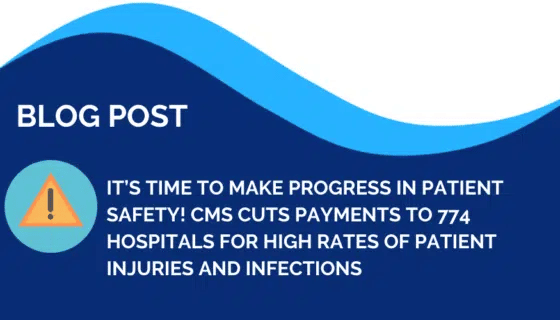This year CMS cuts payments to 774 hospitals over patient complications for having the highest rates of patient injuries and infections.
A lot can be said about the complexity and effectiveness of the Hospital-Acquired Conditions Reduction Program. The program delivers a pay-for-performance model that uses financial incentives for hospitals to prevent harm among patients and reduce hospital-acquired conditions.
Despite its intention to improve patient safety in healthcare, many hospitals have argued they are in difficult situation. There are those who serve a larger socioeconomic disadvantaged population and propose the risk adjustment isn’t suitable. There are also academic and teaching hospitals to consider, many who have expressed they feel they are being disproportionately penalized for information that can’t be captured in the Medicare billing data. Or, there are hospitals exceling at faithfully reporting and accurately testing who argue that their transparency and heightened standards for doing so can come at a penalty cost in comparison to other facilities who may not have the same thorough approach. We can all agree, it’s complicated.
Despite the intricacies and controversy of the program, we all recognize that hospitals need to keep pushing forward in every effort to improve patient health and safety. Penalty or no penalty, these adverse events are still in fact occurring, and at an alarming rate. We cannot waiver on the notion that patient safety and reducing harm needs to be a priority. According to the Centers for Disease Control and Prevention, on any given day, 1 in 31 hospital patients have at least one healthcare-associated infection that was contracted from their hospital stay. This runs the risk of further complications, lengthier hospital stays, readmits and in some cases death. An even scarier fact, medical errors happen to be the third leading cause of death in the United States.
We all have protocols and practices to follow for safety and to reduce risk in our organizations. But how else can we improve? How can we become even better? The answers can likely be found in the data. There’s so much value in utilizing data and leveraging it to determine key findings which may lead to narrowing in on problematic practices or areas for concern. Sure, data analysis may sound intimidating, but it does not have to be. That’s where MorCare can help simplify your practices with our solutions. Let us unveil how starting small with automated tools, dashboards and capturing integral data is a step towards driving a big impact on new or improved processes, efficient workflows and mitigating risk. Together we can make progress a reality.
To schedule a patient safety & risk management consultation, please contact us.

